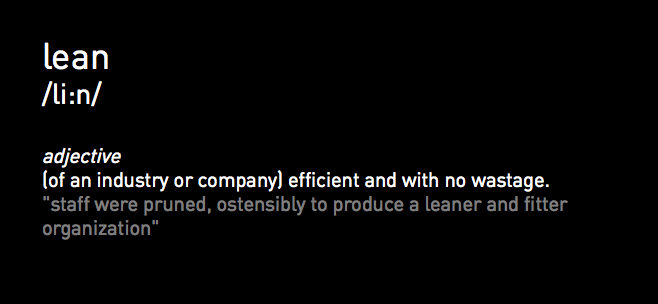
Lean UX – Part 1
The lean UX approach tends to focus on reducing deliverables and testing rapidly with real users to get an idea of how product design ideas meet core objectives. In other words this approach focuses on the design phase. It involves customers throughout the design process. It’s collaborative and cross-functional.
Here is how J. Gothelf, the author of Lean UX, sees it:
“Get a concept. Create a prototype. Validate internally. Validate externally. Learn from user behavior. Iterate”
While Gothelf describes lean UX according to 5 principles, Wikipedia explains it using 7 principles:
1. Eliminate waste
Forget heavy deliverables. Keep them light and editable. Your final product is your deliverable.
2. Amplify learning
Test the design often. Give priority to tiny tests. Ask internal team and external users for feedback to get information and inspiration.
3. Decide as late as possible
Decisions will be based on facts and not on uncertainty and predictions.
4. Deliver as fast as possible
The quicker a design is delivered, the quicker feedback can be gathered.
5. Empower the team
Be collaborative. The design should be shown to the whole team to get some feedback and to be understood. Forget silos.
Integrity is consistency. The experience of using a product (by use, ask for help, etc.) has to be consistent.
7. See the whole
This point resonates with “Forget silos” in #5. The team and users are involved. The design should focus on the big tasks and their relationships rather than the big tasks divided into small tasks, which creates partial knowledge and avoids a holistic view.
Here are some pros and cons mentioned in Tim Jaegger and Jared Spool’s articles.
Pros
· Lean UX is simple and fast.
· Lean UX unifies teams.
· Lean UX prioritizes and helps define which deliverable is essential.
Cons
· Designers feel they don’t have the control of their design anymore.
· Lean UX doesn’t work well with international teams (with geographical location): sketches have to be explained, culture differences have to be bridged, work methodologies can differ between locations… these all create a big challenge.
· Lean UX doesn’t work with hands-off clients: they don’t have always the time for being part of the process.
Conclusion
In Lean UX, it can be hard to define a framework and expect to follow it throughout the project. Lean UX is a more organic approach and the participants need to be prepared for the unexpected. Each time the design is tested, it can bring the team somewhere else, to a solution that hadn’t been imagined before.
In part 2, we will share some experiences we had with Lean UX. Before that, just a quick question: have you already experienced lean UX? We’d love to hear from you.
Source img: http://www.oxforddictionaries.com/
0 Comment(s)